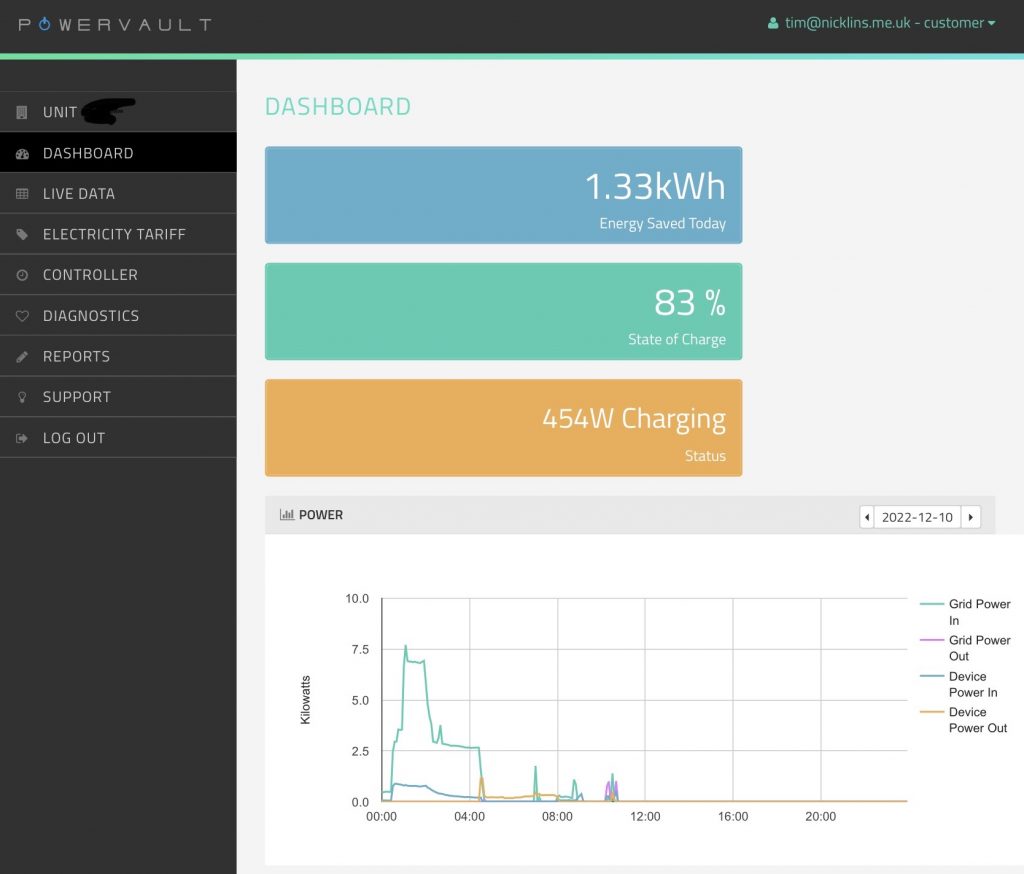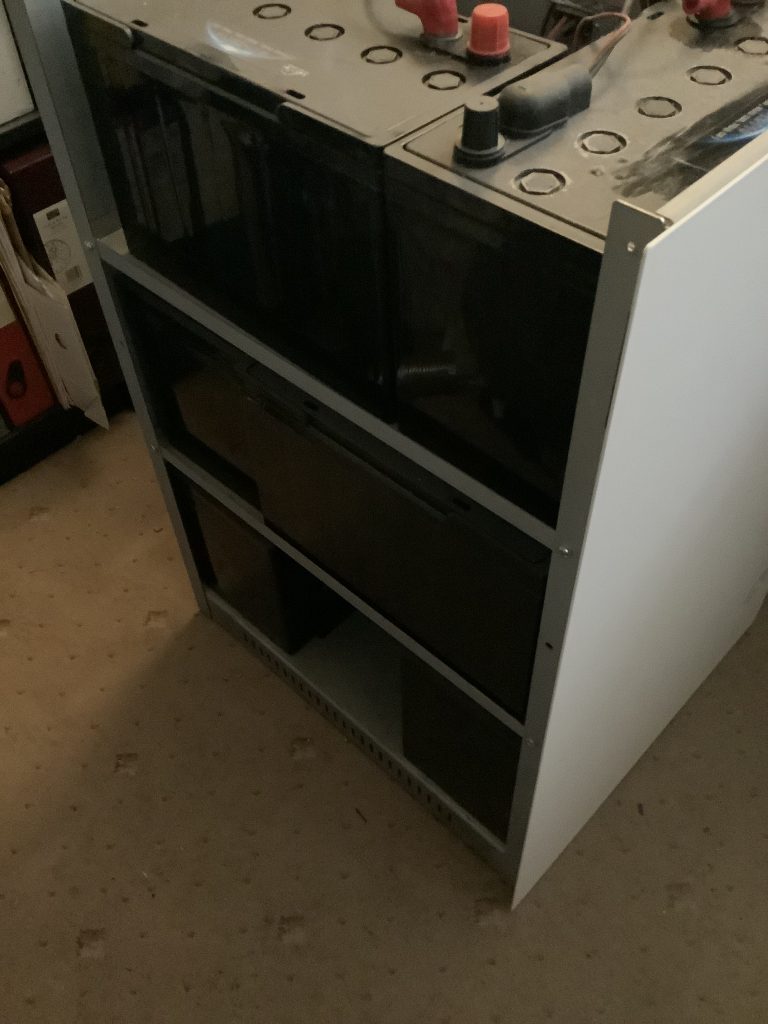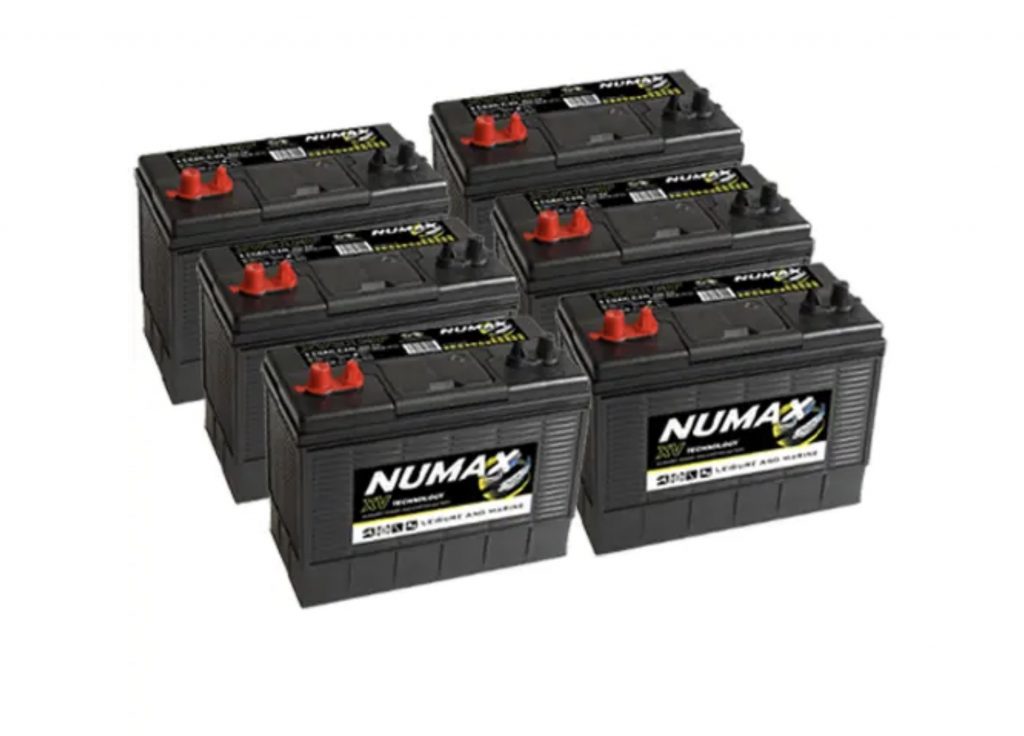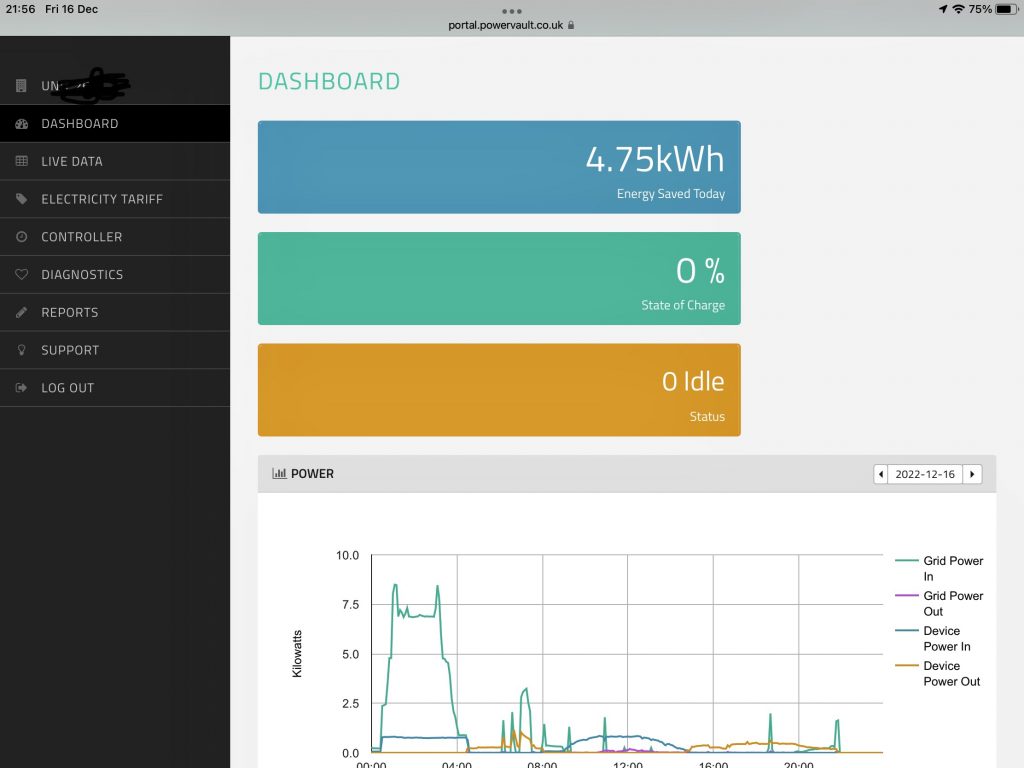
My Powervault battery is now six years old. Initially I used it only to store surplus electricity from my solar panels but more recently have also managed it from my HEMS to reduce my energy costs by charging it when electricity is cheapest to offset consumption when electricity is most expensive. However it’s become clear in recent weeks that the working capacity of the battery had significantly declined.

My Powervault is designed to have a reasonable life – its 7.92 kWh internal batteries (6 batteries x 12 Volts x 110 Ah) are limited to 4 kWh to maximise the number of charging cycles. However after 6 years working capacity had dropped to less than half of that and I decided that the time had come for replacement. Declining battery capacity is illustrated above with the blue line showing battery charging between 00:30 and 04:30. If the battery had continued at constant power (about 750 Watts) then it would have charged 3 kWh (4 hours x 750 Watts / 1000 Watts/kW). However here the battery has ceased to draw 750 Watts from around 02:00 and thereafter power consumption has significantly declined – this may be about 1.75 kWh rather than 3 kWh.
These figures (1.75 and 3 kWh) are also energy into the battery – but you don’t get out everything that you put in. With a quoted round trip efficiency of 80% then 1.75 and 3 kWh in would deliver 1.4 and 2.4 kWh output versus the original capacity of 4 kWh.
I reached out to both my installer and Powervault themselves but neither got back to me with any proposal to investigate or replace the batteries so I resolved to do it myself.

Initially I did a little investigation by removing the top and side panel of the Powervault (after turning off the power). Inside I found six twelve Volt one hundred and ten Amp hour batteries arranged over three shelves on plug and socket connections – so fairly straightforward to replace. A search of eBay for deep cycle batteries of similar capacity indicated prices range from around one hundred to around three hundred pounds per battery (six required). I eventually decided to go for the cheapest as I wasn’t entirely sure of success and I don’t know for how long my six year old system will be supported even if battery replacement was successful.

The Numax batteries are sold as deep cycle batteries ideally suited for solar installations.
The process for installation of new batteries consists of unplugging and removing all the batteries from top to bottom, and then installing new batteries from bottom to top – two on each of the three shelves. I found it necessary to undo the fixing screws on the back of one of the shelves in order to flex it upwards to create enough clearance to get the batteries on the level below out.

It’s only been just over a week now, and it’s fairly dull weather at the moment, but it does seem that the replacement has been successful. The dashboard above for example shows both that the system has charged at full power for 4 hours overnight (3 kWh in) and also that 4.75 kWh has been saved (versus 4 kWh working capacity) as to a degree there’s some double-dipping going on with the two partial charges of more than half capacity (one overnight on cheap mains power and one during the day on surplus solar power).
Time will tell what the longevity of these cheap batteries is.

Pingback: Reviving the battery II | Greening Me